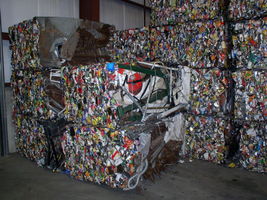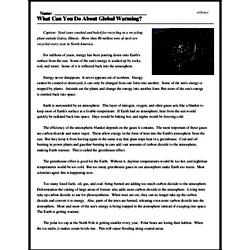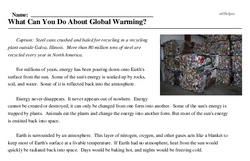What Can You Do About Global Warming?
Caption: Steel cans crushed and baled for recycling in a recycling plant outside Galva, Illinois. More than 80 million tons of steel are recycled every year in North America.
For millions of years, energy has been pouring down onto Earth's surface from the sun. Some of the sun's energy is soaked up by rocks, soil, and water. Some of it is reflected back into the atmosphere.
Energy never disappears. It never appears out of nowhere. Energy cannot be created or destroyed; it can only be changed from one form into another. Some of the sun's energy is trapped by plants. Animals eat the plants and change the energy into another form. But most of the sun's energy is emitted back into space.
Earth is surrounded by an atmosphere. This layer of nitrogen, oxygen, and other gases acts like a blanket to keep most of Earth's surface at a livable temperature. If Earth had no atmosphere, heat from the sun would quickly be radiated back into space. Days would be baking hot, and nights would be freezing cold.




